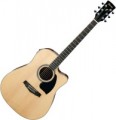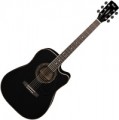The material from which the neck of the guitar is made — more precisely, the base of the neck (the fretboard can be made from another material). Now the most commonly used materials are:
nato,
maple and
mahogany. For the value of this parameter, see p. "Top deck".
The presence of a
case or cover in the tool delivery kit (what exactly is included in the kit must be specified in each case separately).
A case is called a case made of hard materials, a case is made of soft materials, this is the main difference between these types of accessories. Otherwise, they are similar: both the case and the cover are provided primarily for the convenience of transporting the tool. To do this, the design provides for handles, shoulder straps and other devices that facilitate carrying, as well as compartments for additional accessories (replaceable strings, tuners, etc.). However, it is desirable to store the tool in a case or case — to protect it from dust and other adverse factors.
The “native” case/case is good because it optimally fits a specific guitar model and is immediately sold with it, saving the owner from unnecessary searches. On the other hand, manufacturers often include the simplest types of cases in the kit, with minimal additional features and a very limited degree of protection. This is especially true for cases that can be made of thin material and are only suitable for short-distance movements in warm weather without rain. Therefore, sometimes it makes more sense to buy a case separately.

